Spiral 2023, A different bikepacking race
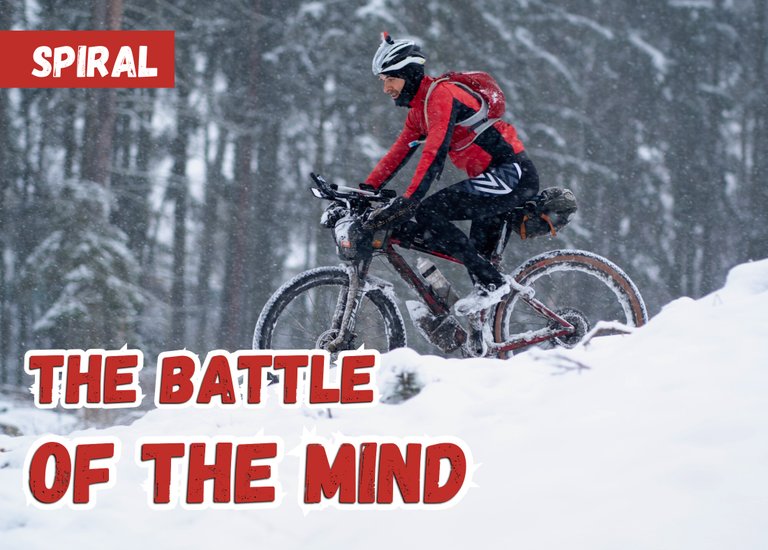
Článek je k dispozici i v češtině 🇨🇿.
Spiral is an unusual race. It starts in the Czech Republic during December and you’re not sure about the distance or the place of the finish until the very end. Weather is varied and each year it has brought a special challenge. It can be rainy and windy or you can fight deep snow and freezing temperatures.
Here are the main race propositions making Spiral so special:
- You won’t get a route weeks or days in advance. You don’t even get it at the start. You only know that it should be between 200–400 kilometres.
- To follow the route, you can’t use your GPS unit. You must use an Android phone that has a proprietary Spiral app that will only show you 10 kilometres ahead. At least you don’t have to spend any time planning.
- The start is usually in the central region of Bohemia. The route will begin as a spiral and lead you to the high mountains nearby.
I know that there are tougher winter bike races in the world, but the difficulty of Spiral might be the fact that it’s not that cold. Nobody wants to spend a lot of money on a fat bike and expensive arctic gear. Most of the riders take the bike they have and add some DIY projects to keep feet, hands and electronics warm enough.
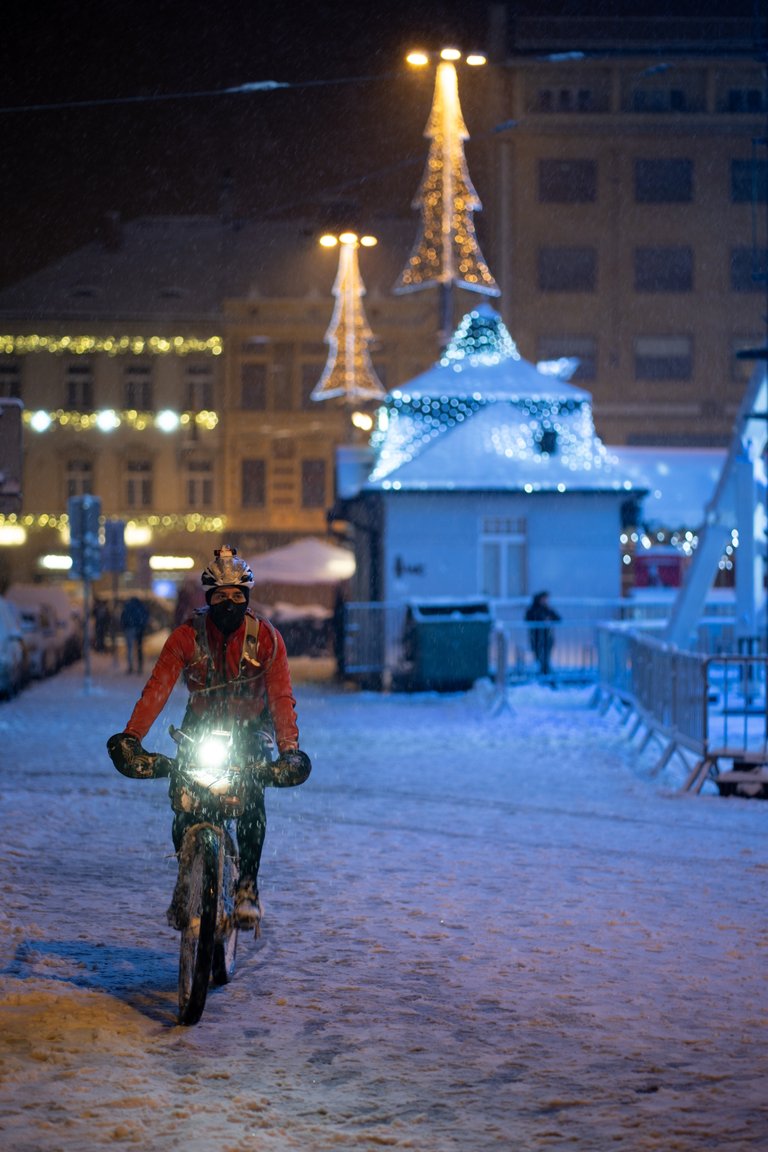
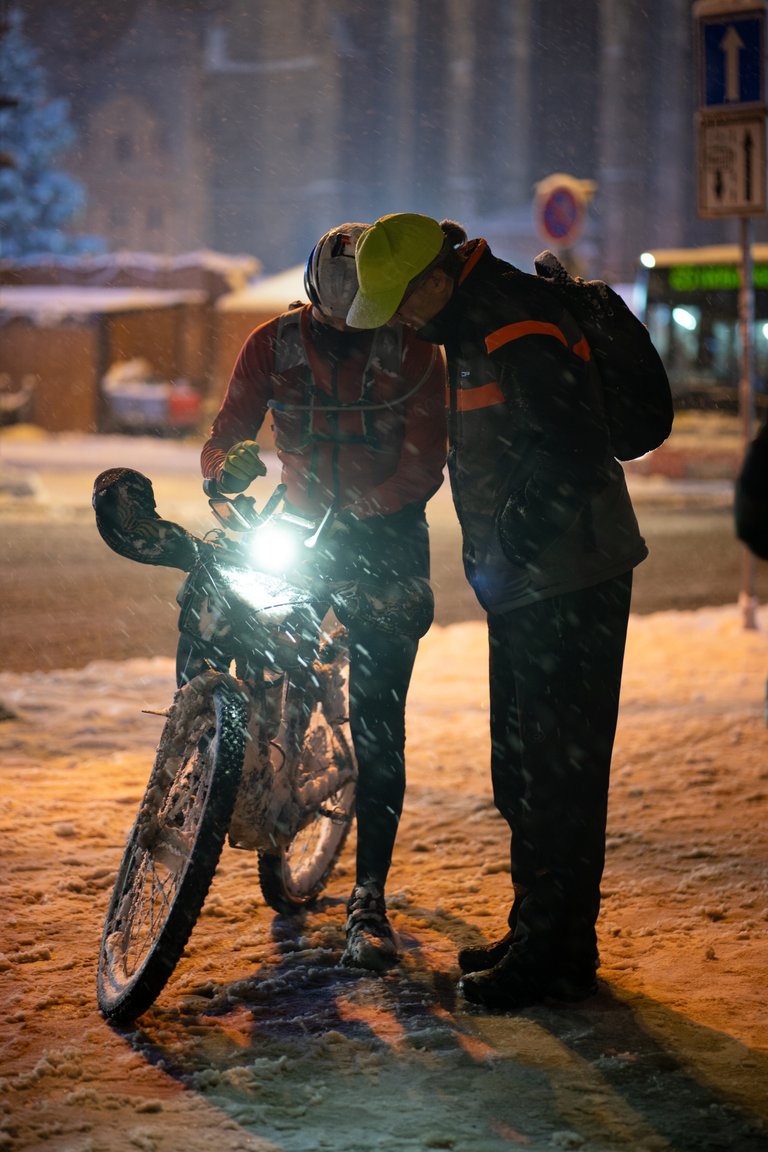
I will not describe my progress in the race as I usually do in other reports. I’m not able to construct a story from the start to the end. It’s all so blurry and even when I follow the track on a map I cannot connect it to my memories. It’s because I spent a major part of the event in the dark and snow and everything looked the same. And because I couldn’t look at the map before the event, as I usually do, I had no idea where I was.
But still, I have something to say. I will focus on two main topics—Why I did it and What I learned about winter riding.
✨ My goal
To display Instagram post allow marketing cookies.
You can find the complete list of cookies on privacy policy page.
Spiral wasn’t on my calendar until the very end of the year. It was more or less a spontaneous decision. As I ride a lot in spring and summer, I don’t want to spend a long time on a bike in winter. This race has never caught my attention. But as I saw some pictures from the 2022 Tour Divide, where riders struggled in blizzards on mountains, I was a little concerned. Wouldn’t it be best to test my gear in a safe environment?
The initial thought was that I would bring the same clothes as I would have on TD and take some more for the moment of crisis.
As the start date was coming closer, the weather was getting worse and worse. In the last week, we had a lot of switches between freezing and not freezing temperatures and a lot of rain, so towns were covered in ice. On one of my rides, I had a fall and I started to think about bringing spike tires.
For the day and first night of the race, the forecast promised -6°C and a lot of snowing. It was clear to me that it will be much harder than I anticipated, and TD clothes clearly wouldn’t be enough. The conditions to test them weren’t going to be good. Winters here are usually milder in December.
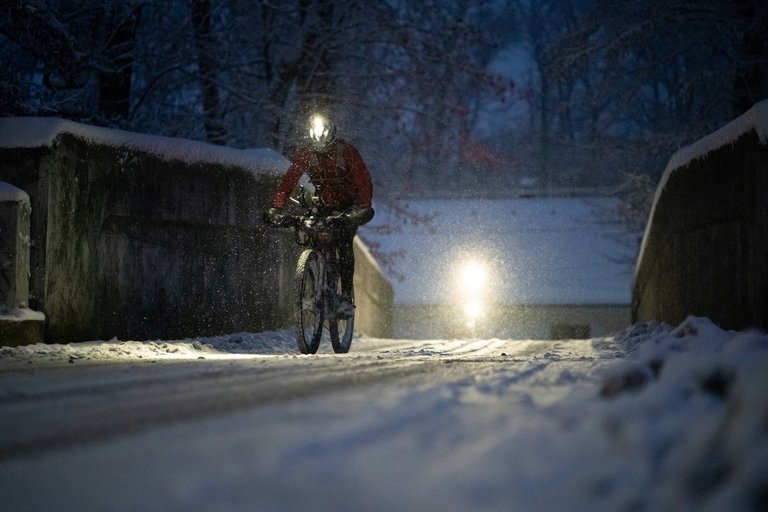
And that was it. I lost my goal. I didn’t have any reason to go to Spiral and it was a big mistake. I wasn’t looking forward to it at all as I knew that riding in the snow was hard for me because I didn’t have a lot of experience and couldn’t hold a straight line. I didn’t even send a drop bag to the finish line as completing the route didn’t feel important.
My only reason was—Well, I already paid … and that is a very weak “Why”. It’s not that kind of “Why” that would make you pedal hard or prevent you from taking a train home. And that lack of motivation made it very hard for me.
My training for TD has just started and I didn’t want to push very hard, because I wanted to get back to it very fast. My primary goal was to test the gear and not to race. And I got all these looks—what is wrong? Why are you so slow? I guess I’m in the phase now when people have some expectations from me and it’s hard to let that go and to do my own thing.
I was OK with arriving last to the finish. But let me say one thing. In the world of bikepacking, there aren’t any “C” races. I was so fucked up after it that my training was postponed by two weeks.
🥶 Challenges
Let’s talk about challenges that arose in winter riding. I learned that it’s one thing to ride for several hours on a casual Saturday trip and a completely different thing to ride for 30 hours nonstop.
My personal challenge was a lack of motivation and lack of proper preparation. As I needed to use a different setup, I didn’t make myself familiar with it. And the last thing that you want to do in a crisis is to think about where the hell you put your gear. But let’s focus on more universal problems.
📞 Keep electronics running
The most obvious challenge was how to handle navigation. I couldn’t use my standard GPS unit.
- I bought a dedicated phone just for my bikepacking races. I chose the Sony Xperia 10 V model as it’s fairly light and waterproof, has a huge battery, eSim and a USB-C charging port.
- To attach it to handlebars I bought a hardcase and glued a Garmin adapter on it, so I would only have one type of holder. I can use it for all my devices now. I was a little sceptical about it holding up well (and I took a spare holder and a spare phone), but it was fine.
- I was trying to save battery by turning off the display, but this only worked when I saw the tracks of the people in front of me. As they disappeared under the snow and I had to make my own decisions, it was annoying to put my hand off the handlebars as snow made all roads extra sketchy.
- Operating the phone in gloves was as annoying as you think it was. I was trying to not touch anything and my only interaction with my phone was when I wiped off the snow which was sticking to the display.
- Some people had insulation foam or some kind of protection for the phone. I was like … eeeh… It’s gonna be fine. And I got lucky. It was fine. Mostly.
- There is an important rule. As you start the race, you need to connect a charging cable to your phone. You don’t have to charge it immediately (but it’s a good idea), but it will prevent moisture from getting inside your device. Once you pull the cable out, you’re screwed. Don’t even try it! There is software protection in a phone that will prevent it from charging.
- I don’t know if it was because of my power bank or the phone, but the charging wasn’t working as expected. It kept saying that the power bank was connected and there weren’t any warnings about a wet port, but my battery percentage wasn’t going up. Luckily for me, the battery level was holding steady. That’s why it’s a good idea to charge the phone from the beginning. In this race, charging is not plug-and-play and the cold means a very hard time for electronics.
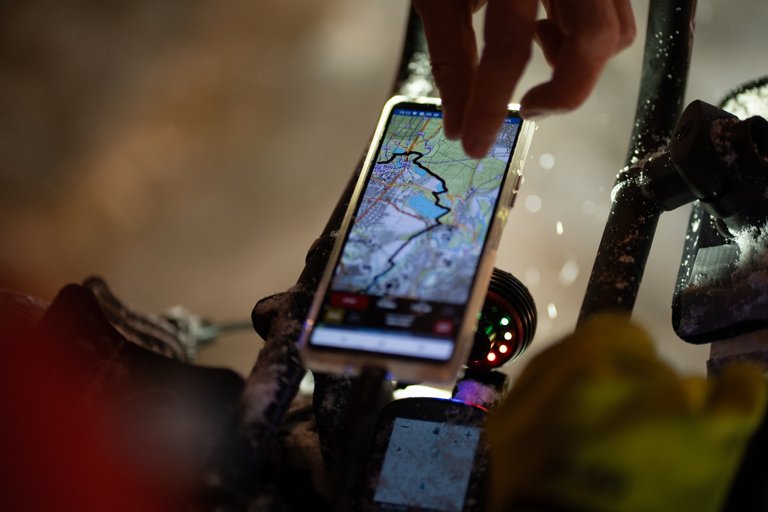
I was worried about what the conditions would do to my phone. A solid outdoor device might be a better solution, but it’s just too heavy. Even though there was melting snow on my display for dozens of hours, it was still controllable. That isn’t something I can say about my iPhone which gets totally unclickable in wet conditions.
👓 Keep your vision clear
Another big problem I was facing were glasses or the lack of them. I can’t give you the best solution because I don’t have one. I usually wear glasses with prescription lenses, but I decided not to take them.
As it should have snowed all night, I was worried that they would be useless. When snow is wet and sticky it easily disturbs my vision. Or when I get too hot in the face, my glasses get misty and I see nothing. I thought that glasses would be useless anyway and when I have time to get used to seeing without them it’s better than putting them on and off. Anyway, it took a few hours to get used to it.
But not wearing glasses is terrible too. Snow was falling into my eyes and it was so painful. I kept blinking and hoping for the best. I don’t know what the best solution for this problem is either, but maybe some ski glasses wouldn’t be the worst idea… I don’t know. I don’t ski.
There was one pretty nice thing. In summer races you don’t see much stuff at night as everything is just black. But it isn’t true when there’s snow. You don’t even need a strong light and nature looks much less hostile. It’s hard to describe it but the duration of the night just wasn’t an issue. I enjoyed the scenery.
❄️ Everything is frozen
Sticky snow and ice were one of the worst problems. There were many puddles and as I went through, the water froze on my gears and shifting was so off. My pully wheels got an ice crust, and my chain was skipping 100 % in some sections.
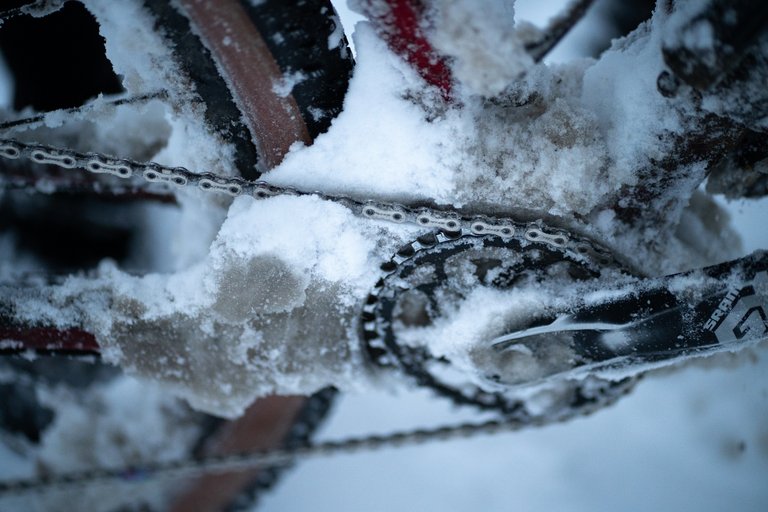
What I would bring next time is a defrost solution for cars. I wasn’t aware of their existence as I’m not a driver, but they’re super helpful. You just spray them on frozen parts, and they get unstuck. My bike was covered in this mud/snow/ice mixture so much that I was worried it wouldn’t hold up.
I had a really low moment when I had a problem with my brakes and I needed to remove my rear wheel. As I didn’t have the anti-freeze, I used my breath to warm the axle so I could unscrew it. And trust me, you don’t want to do any of that with your bike in these temperatures. Your body will lose heat very fast, and your fingers will soon feel like wooden sticks. Even in my down jacket, I had a hard time keeping warm and repairing my bike. It can be risky.
A frozen bike wasn’t the worst thing. As there was a lot of deep snow, I walked a lot. Snow was sticking to my shoes just under the cleats. It was layering and layering so I had large snowballs on both my feet. It made walking difficult, especially up, because my feet were in an unnatural position and after the race, my calves felt bad. It was also annoying to get back on the bike as I had to scrub off balls of snow from my shoes first. But it looks like I had the wrong type of shoes because not all of us had this issue.
I have a similar story for water. Yeah … it freezes. I realized this a few days before the race, and it was clear that bidons are not the best place to store your liquids. I took a running vest and camelback. Because I was lazy, I didn’t make any insulation for the hose, so I had one rule—I needed to blow water back to the camel. Of course, there was one time when I forgot, and that cut off my water. But it was OK. I just covered myself in a puffy jacket and I defrosted the hose with my body heat. It just took a while.
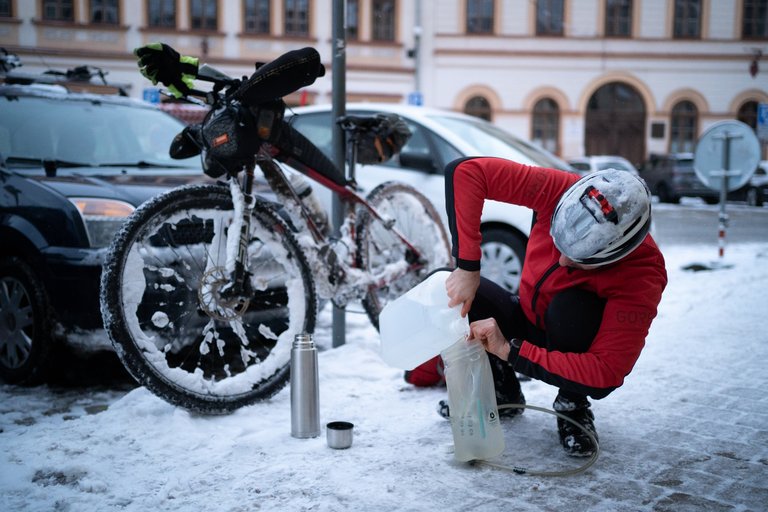
🐑 Being cosy
Being in cold weather might sound like the hardest thing in the race but it wasn’t for me. I don’t have a full temperature chart as I was so unprepared that I didn’t even have my Garmin fully charged, but for the sections I was able to track, the average temperature was -2°C and the minimum was -6°C. But I would say that the numbers on my Garmin weren’t a perfect description of reality.
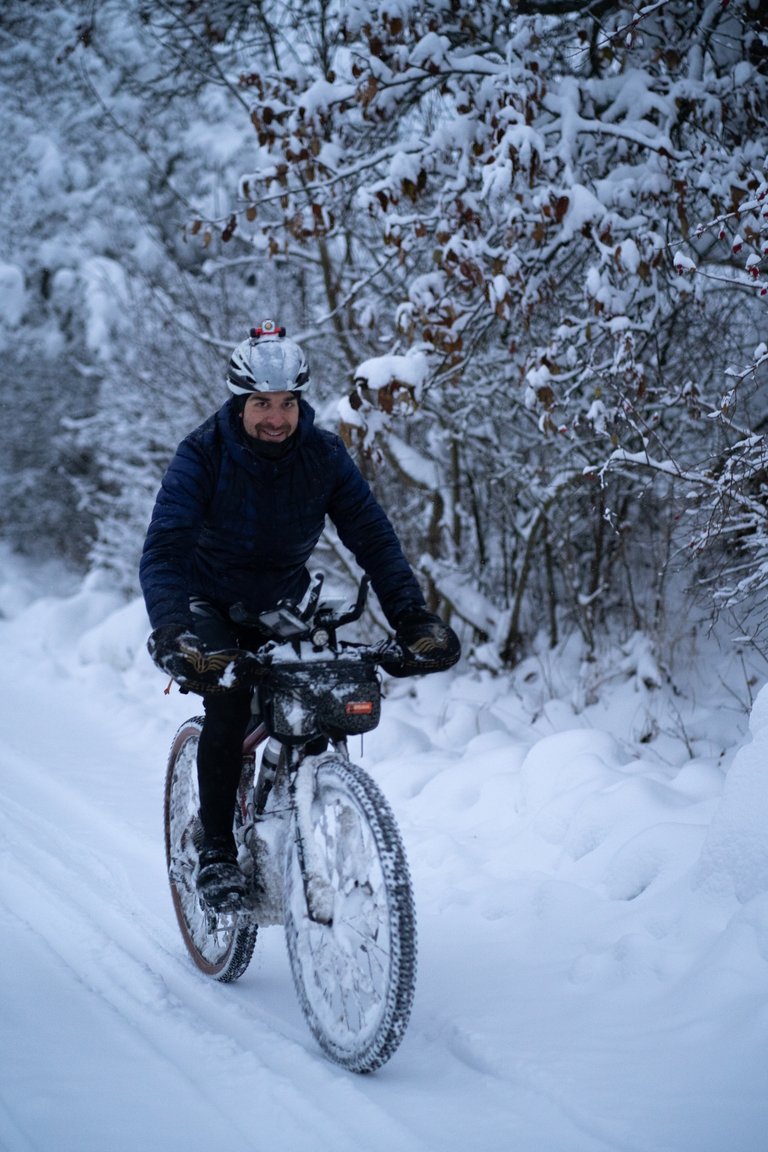
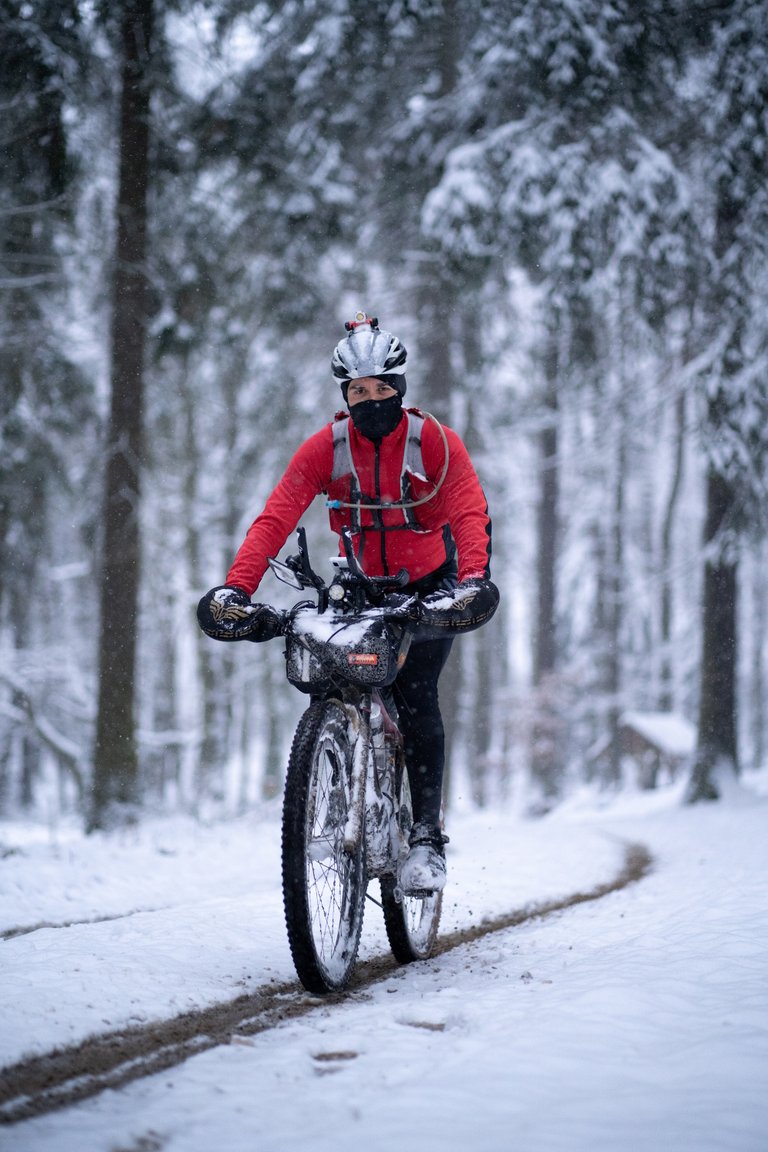
Temperature feel may vary greatly. I was OK for the first night but as the sun rose, I suddenly felt like an ice lolly. I had to put on more gloves and my down jacket. I think that I just needed food as my body was conserving energy and it wasn’t producing enough heat. I stopped at a shop, bought a bottle of Coke and some bananas and in 10 minutes I was a different person. And not an ice lolly.
It’s not usually the body core that’s the biggest problem. You should keep it warm, but it’s not that hard. I would say that the most problematic are your feet and second are your hands.
Hands are a little bit easier. You can get handlebar gloves that work well. However, they might not be enough. I have a cheap pair from AliExpress and I also brought two pairs of gloves with me but still … in some parts my hands were chilly. I wanted to take some Merino mittens, but I had none available at that moment and I was like … eeeeeh … gonna be fine. I should have bought some.
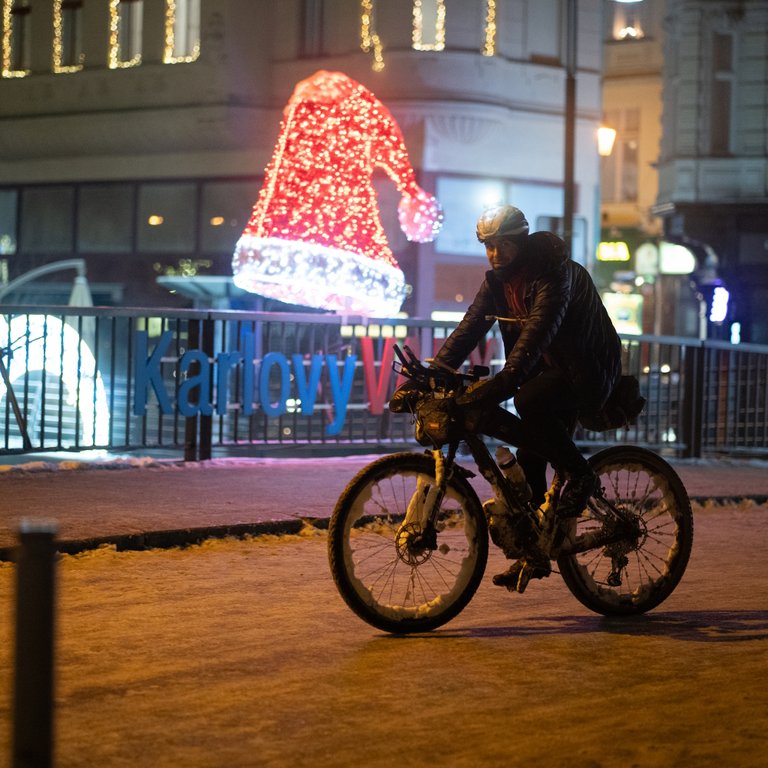
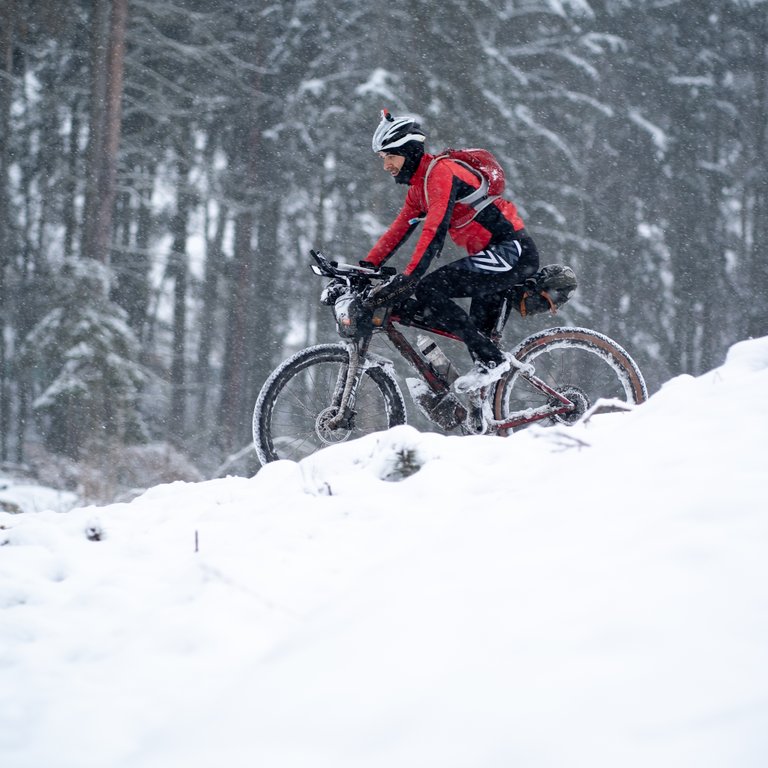
Feet are much more difficult. You can’t use bulky stuff because it would interfere with the pedalling movement. As long as you keep your feet dry, it’s doable, but wet feet are a quick death. You don’t want your fingers to turn black. I saw many variants of how people tried to fight the cold:
- Use of real winter biking shoes.
- Most people also used some kind of overshoe. I had only toe covers with an extra layer of silver foil but as I walked, it was annihilated on the first night.
- They were taping the shoes so snow couldn’t get inside, melt and make their feet wet.
If none of this works, you can always use two layers of socks and a plastic bag between them. It might be a waterproof sock for poor people but it works very well.
🤪 Is Spiral any good?
Would I recommend somebody to do it? As I wrote in the first section of the article, I had a big problem with motivation. I felt like shit for the first 7 hours (part of it might be the fact that I accidentally locked my fork and the terrain felt pretty rough). I was kind of surprised I didn’t give up in the first town. At one point I turned around and I was heading to the train station before I changed my mind.
Maybe you know the feeling when you finish a race and say to yourself—NEVER MORE. And then after hours, days, weeks or months it comes back to your head, you think about it and in some moment you might say—yeah, I could do that again. It wasn’t that bad… I didn’t have a moment like this for a few years. Even at the finish line, I’m like—OK, give me more, happy to do it again.
In the first 24 hours of the race, I was pissed. I didn’t even want to write about it on this blog. I wanted to finish and forget about it. But in the last 8 hours, as I learned to ride in the snow a little more, I was more like—yeah, it’s quite a good challenge. It could be fun. I will just need a different perspective.
And as I rode the last section with Hana Uhlíková on our last places, we had a little chat, the mood went a little bit up and just as we finished, I was like, yeah, I might come back.
Spiral is fascinating. On a normal bikepacking race when people ask me where I’ll be riding, at least I know the finish line. This time, when somebody asked me where I was heading, I simply wasn’t able to answer. I don’t know man! I don’t know where I am and where I’m going. It was a weird feeling when, as you knew only 10km ahead and organisers could change the route on the fly, you became a pawn in their game. They could do anything they wanted to do with me, and I would just follow as a puppet.
If you find good motivation to try this, I would recommend it to you. It’s a different game. It can be challenging but it’s not as impossible as you might think. You just need to be smart, do some DIY stuff and have a good time. You will enjoy the “who the fuck is that” look of all those people you will pass by as you’re cruising in the worst biking weather of the year.
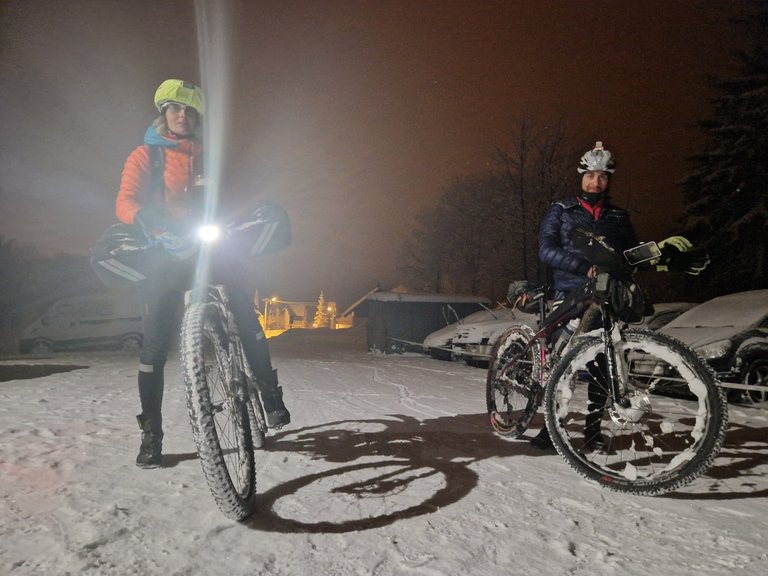
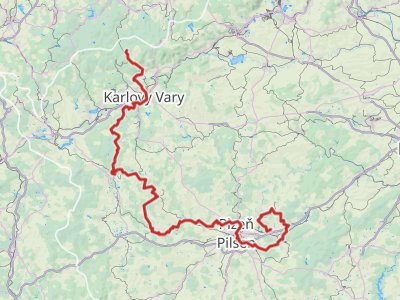
- 277km
- Distance
- 5,417m
- Elevation
- 34:57
- Duration
Did you like the post? 😍 I am making a content that can save your time and money. ⏳ By supporting me on Ko-Fi platform, you allow me to create more content.
💬 No comments yet
What are your thoughts? 🤔 Feel free to ask any questions 📫